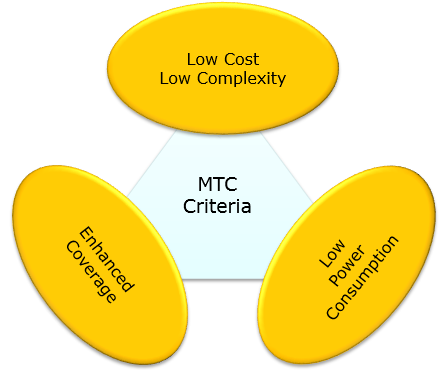|
4G/LTE - BL/CE |
||
|
LTE-BL/CE (LTE-M1)
BL stands for Bandwidth reduced Low complexity and CE stands for Coverage Enhancement. In release 13, you would see many statements about BL UE/CE UE, but I took me quite a while to find out what they stands for :) (I found it in 36.300). In many Whitepaper or articles, you might have seen the term like MTC, LTE-M1. But in formal 3GPP Technical Specification, you would noticed that these terminology (e.g, MTC, LTE-M1) is not clearly defined. In 3GPP TS, the term BL/CE is usually used to indicate the implementation of LTE-M1.
Followings are topics / sections that I want to cover in this page.
Fundamental Features of LTE-M1 (BL/CE)
In short, LTE-M1 (BL/CE) is an design / implementation that is to meet the MTC criteria as shown below.
Followings are some of the major characteristics of LTE-M1.
How is LTE M1 compatitle with legacy LTE ? Actually this can be a pretty fundamental question and help you a lot to understand about LTE M1 and Legay LTE comparison, but I asked this question to myself with more practical reason. When I started to reading LTE M1 3GPP specification (I think it was around Aug 2016), I was eager to try something myself just to understand the specification itself. (I am not such a genious to understand the details just by reading the documents. There has been almost nothing that I got a detailed understanding without hands-on). Of course, at that time there was no LTE M1 device that I could try with and I didn't have any LTE-M1 capable test equipment either. Fortunately, However, I had access to a couple of pretty good toys : a LTE network simulator with super detailed controllability and high performance vector signal analyzer with LTE analysis feature. So my idea was :
And with some other reason, I thought I might tweak my super flexible LTE network simulator to act like LTE-M1 eNB at physical layer at least. But the hard reality that I realized was 'it SOUND very similar to legacy LTE, but not same. Not even at the level of similarity where the legacy LTE can be tweaked to emulate a small feature set of LTE-M1'. In short, followings LTE-M1 feature is same as legacy LTE.
It means if you have LTE-M1 device, you may test with the legacy LTE equipment to check if it can detect the cell and decode physical cell ID and check if it can come up with reasonal measurement of RSRP, RSRQ. However, the similarity ends here. All other things are not compatible with the legacy LTE even if they sound similar. Even for MIB (PBCH), LTE-M1 uses different resource element mapping from legacy LTE (See LTE-M1 PBCH). SIB1 decoding is not compatible either. LTE-M1 SIB1 scheduling is not determined by DCI. It is determined by a single parameter contained in MIB and a set of pretty complex predefined table. On top of it, the physical location of SIB1 hops among multiple locations (i.e, across the multiple narrowband index). See LTE-M1 SIB1 (i.e, SIB1-BR) page for the details. From here (from RACH), the differences diverges even further. The scheduling method is completely different and almost every transmission of PDSCH, PUSCH is being done in very specially designed repeating fashion.
In short, my final conclusion was to give up the attempt to try LTE-M1 by tweaking the legacy LTE protocol stack and decided to wait until I get a touch on real LTE-M1 device and LTE-M1 equipment. Now (as of Mar 2017) I got access to LTE-M1 test equipment and waiting to get a touch to LTE-M1 UE :)
Followings are list of the detailed topics. I am assuming that readers already have knowledge on how legacy LTE works and I will describe these topics with focus on the differences from the legacy LTE.
|
||
